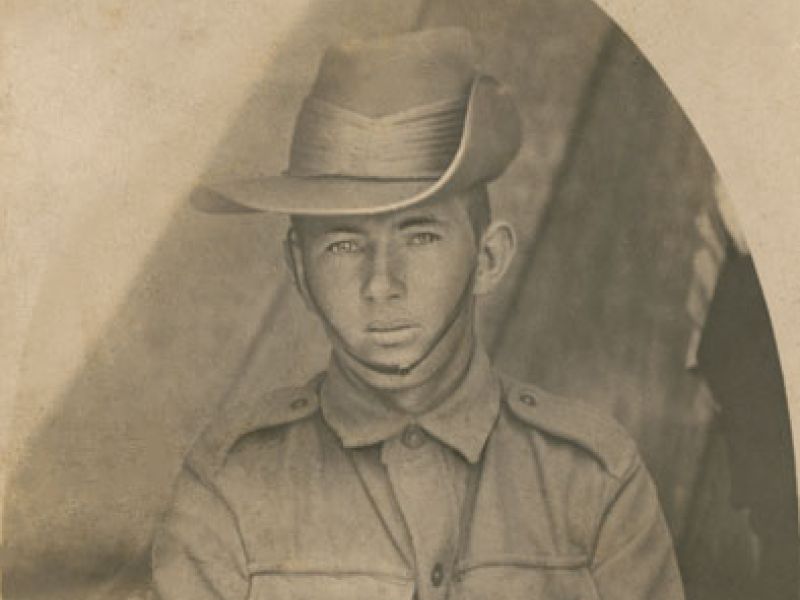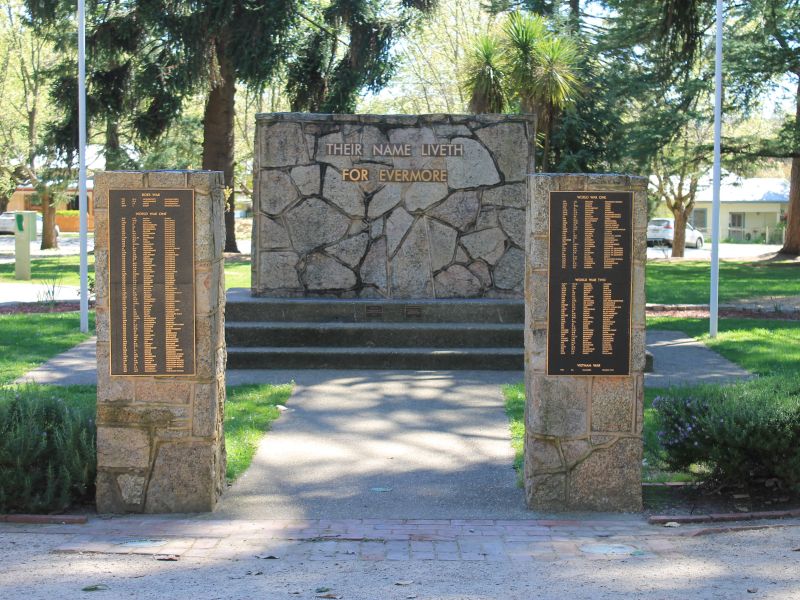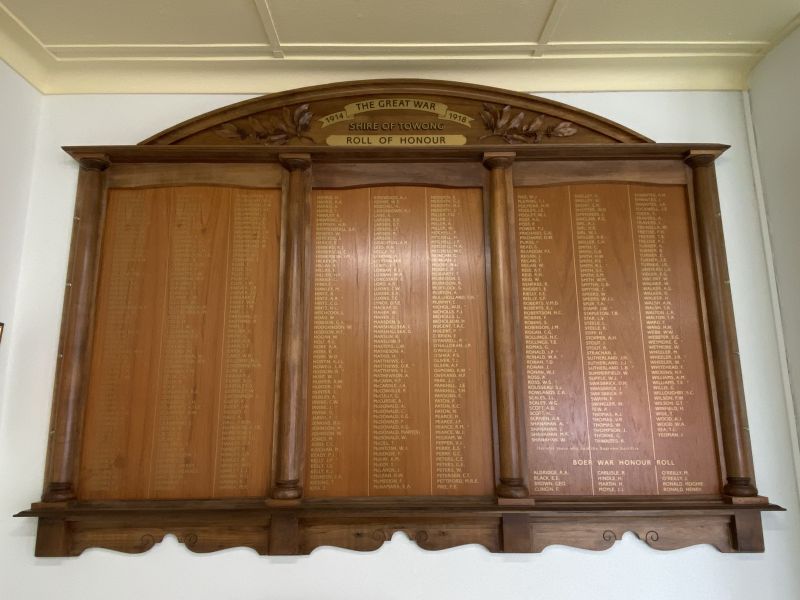James (Jim) Henry Counsell
Jim was born in 1895 at Beechworth, Victoria. He was one of nine children to William and Mary Ellen (née Dunstan) Counsell. By the early 1900’s the family had moved to the Tallangatta Valley and taken up grazing land.
Jim enlisted in Melbourne on the 18th of January 1915. He was originally allocated the Regimental Number 351 and placed in B Company of the 21st Battalion. Being under the age of 21 he needed written permission from his parents in order to enlist and in this case it was his father, William, who wrote and signed the note.
After completing his initial training he embarked on HMAT A38 Ulysses on the 8th of May 1915. The battalion arrived in Egypt in June 1915 as part of the newly raised 2nd Division. While the rest of the battalion proceeded to Gallipoli in late August, Jim was aboard HMAT A40 Ceramic on his way back to Australia. He was joining the many other Australian soldiers who had contracted some form of venereal disease whilst stationed in Egypt. No doubt the young and, possibly, innocent country boy had decided to live life to its fullest before departing for the battlefield.
He arrived in Melbourne on the 25th of September and was admitted to Langwarrin Hospital. The Langwarrin camp area was initially used for interning ‘enemy aliens’. However as the problem of VD escalated in the Australian forces in Egypt it was set up for the treatment of soldiers suffering from sexually-transmitted diseases. Jim was discharged from hospital fit for duty on the 22nd of October 1915. One month later, with a different Regimental number (3987), he embarked on HMAT A40 Ceramic once again, this time to return to the sands of Egypt. By the 22nd of February, after completing more training, he was taken on strength with the 5th Battalion at Serapeum.
On the 12th of March 1916 he was transferred to the Lewis Gun section of the battalion. The Lewis gun was a light machine gun that was fed by a round magazine containing 47 rounds of ammunition. Although weighing around 13 kilograms, it provided infantry with portable fire power. In early 1916 each battalion was allocated 4 Lewis guns, however by July of that year, the number had increased to twelve. Jim would have been part of a nine man team. Each team would have one Lewis gun, a section leader, a gunner, an assistant gunner and up to six riflemen doubling as ammunition carriers, scouts and observers.
A little over a week later, the 5th Battalion embarked on the transport Briton to travel to the south of France and eventually the Western Front. They arrived there after a short journey of five days, disembarking at Marseilles on the 30th of March. The battalion arrived at their billeting area at the village of Steent-Je, 10 kilometres west of Armentiéres, on the 3rd of April. On the 11th of that month Jim decided to do some private sighting-seeing. He was subsequently charged with being absent without leave from the billeting area until 2100 hours and was awarded 1 day of field punishment No. 2. This meant that he would have been placed in fetters or handcuffs although not attached to a fixed object, as was the case for field punishment number 1. Jim would have been able to move around with the rest of his unit.
Early in the morning of the 25th of July, the 5th Battalion were in the forward lines trenches, waiting to attack the heavily defended village of Pozieres. At 0200 hours, after an extensive artillery bombardment, the battalion rushed and captured their first objective, O.G. 1 (Old German Lines 1) and part of the adjoining communication trench. The battalion suffered heavy casualties with 6 officers and 39 other ranks killed, 6 officers and 242 other ranks wounded, and 1 officer and 158 other ranks missing. Jim was amongst the dead. His service records indicate that he was “buried within the vicinity of Pozieres”. Unfortunately, his grave was lost amidst the continuous shelling of the battlefield.
He is one of the 44 World War 1 servicemen from the Upper Murray who have no known grave. He is remembered on the Australian War Memorial Roll of Honour, the Beechworth War Memorial, the Villers-Bretonneux Memorial (Australian National Memorial - France), and the Towong Shire Boer and WW1 Memorial in the Memorial Hall in Tallangatta. For his service during the First World War, James was awarded the 1914-1915 Star, the British War Medal and the Victory Medal.
The 2nd of August 1917 issue of the Upper Murray and Mitta Herald included the following;
“In Memoriam
COUNSELL.-In loving remembrance of our dear son and brother, private James Counsell (Jim), who was killed in action in France on the 25th July, 1916: aged 21 years.
He gave his life for his country,
For honor, faith and right;
With us his memory ever lives -
He fought a noble fight.
Midst the roaring of the battle,
And the rain of shot and shell,
Fighting for home and country
He like a hero fell.
No loved ones stood around him
To bid a fond farewell;
No word of comfort could we give
To him we loved so well.
Inserted by his loving father, mother, brothers and sisters.”

 Stephen Learmonth
Stephen Learmonth
